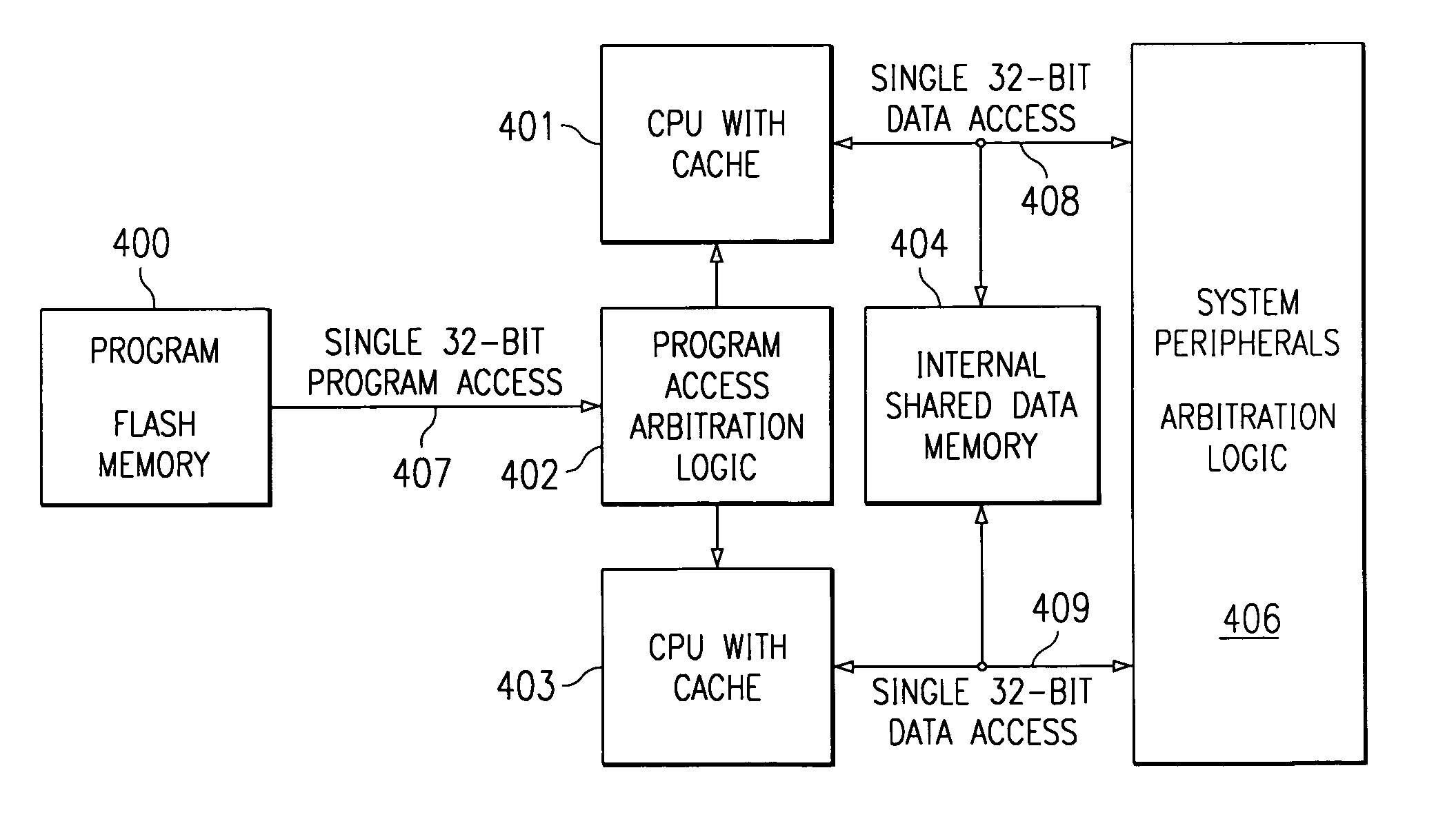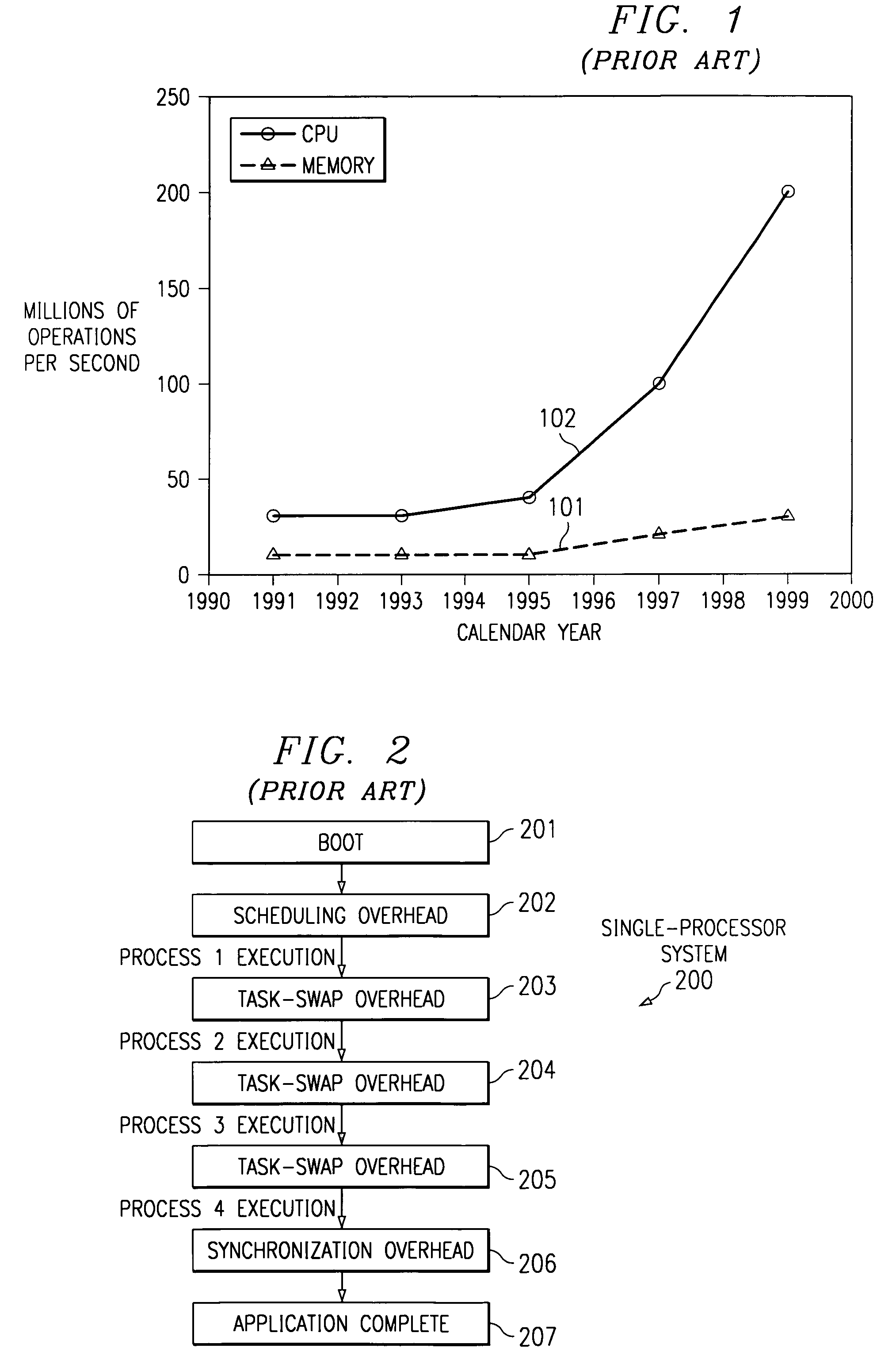Variable clocking in an embedded symmetric multiprocessor system
- Summary
- Abstract
- Description
- Claims
- Application Information
AI Technical Summary
Benefits of technology
Problems solved by technology
Method used
Image
Examples
Embodiment Construction
[0024]The embedded symmetric multiprocessor system (ESMP) of this invention includes a powerful set of central processing unit-memory-peripheral functions densely integrated at the chip level. While some common multi-chip symmetric multiprocessor systems (MCSMP) are generally available at the board level now, the designer of MCSMP systems typically employs plural standard third or fourth generation central processing unit chips for the base processors. Two or more of these on standard processors are disposed on a mother-board and then connected by way of a commonly available bus interface device to a separate traffic controller and memory controller. Such systems use discrete interface and controller components and central processing unit-memory architectures at the board level. This combination of devices has a set of system interconnect requirements and concerns completely different from and often more troublesome than the embedded symmetric multiprocessor system (ESMP) of this in...
PUM
 Login to View More
Login to View More Abstract
Description
Claims
Application Information
 Login to View More
Login to View More - R&D
- Intellectual Property
- Life Sciences
- Materials
- Tech Scout
- Unparalleled Data Quality
- Higher Quality Content
- 60% Fewer Hallucinations
Browse by: Latest US Patents, China's latest patents, Technical Efficacy Thesaurus, Application Domain, Technology Topic, Popular Technical Reports.
© 2025 PatSnap. All rights reserved.Legal|Privacy policy|Modern Slavery Act Transparency Statement|Sitemap|About US| Contact US: help@patsnap.com



